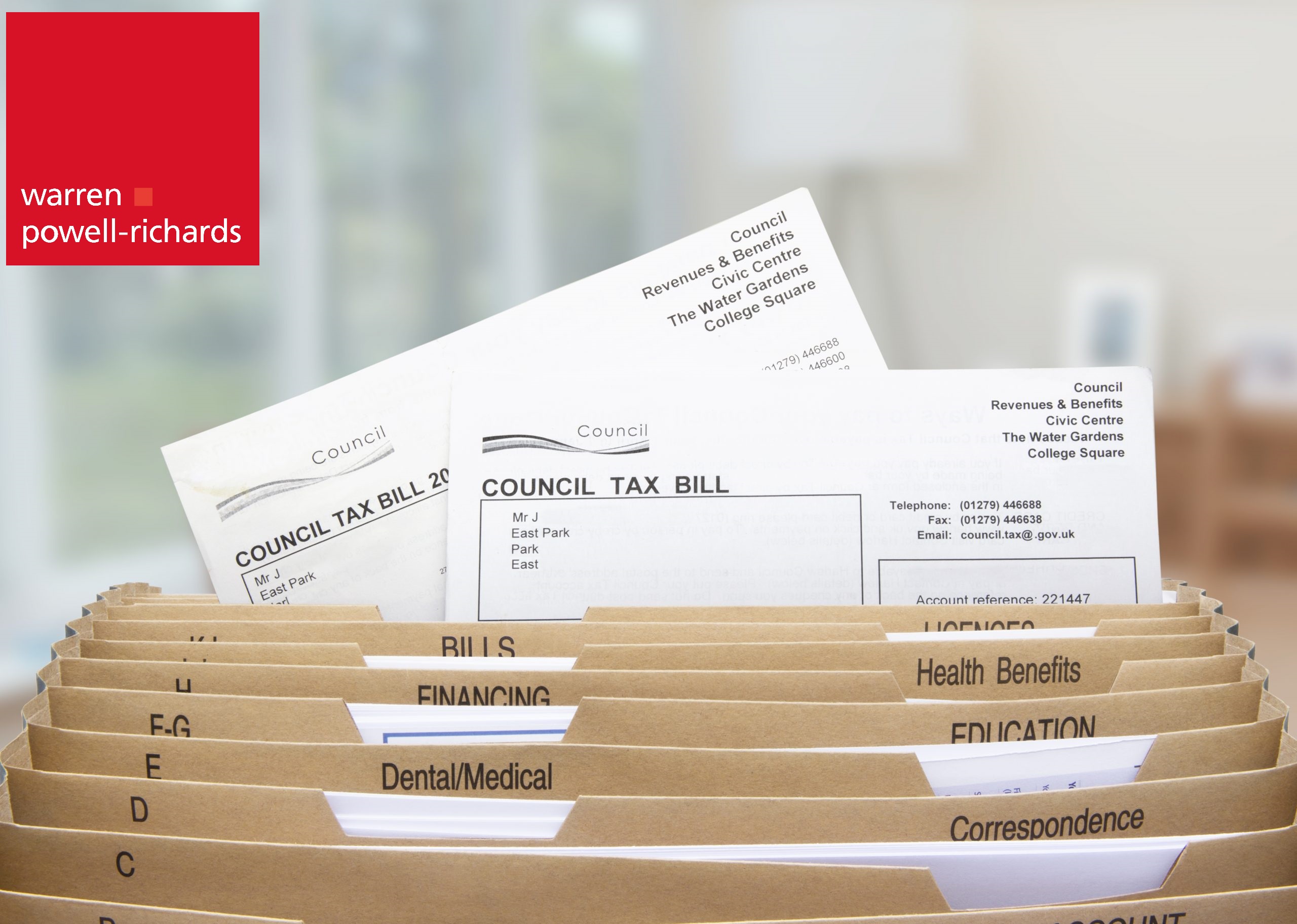Blog
- Details
- Hits: 432
How to Move Home With Your Cat

Moving home is one of the most stressful events that you will experience in your lifetime, with studies showing that the majority of UK adults find it even more traumatic than a relationship breakdown, starting a new job and even going through a divorce!
Therefore, when you are undertaking this massively demanding task, the last thing you need to be worrying about is your beautiful furry, feline friend – your cat!
However, you most likely already are.
You may be concerned that your cat will get lost during the move itself, might try and return to your previous property or simply struggle to cope with their new environment.
Fortunately, there are ways in which you can ensure that moving home with your cat is as seamless and stress-free as possible, for yourself and your much loved pet.
Stick to your normal routine
In the run up to moving day when you are packing up your home, try not to disrupt your cat’s daily routine too much. Obviously, this may be tricky as you are trying to organise all your belongings ahead of the big move, but it is important that you try and stick to a routine so that your cat feels safe and secure.
Try to carry on feeding your cat at the same time, in the same place, and spend time with them as you usually would on a day-to-day basis.
Introduce the cat box
As a cat owner, you will know only too well that cats often fear their travelling box! Normally because they associate it with having to leave their safe and familiar surroundings and often they will be placed in it to travel to the local vets – definitely a place they prefer not to visit! Therefore, it is a good idea to leave the cat box out for a few days before you move home so that your cat feels more comfortable around it.
Register with your local vet
Once you have made the move to your new home, your cat will be more vulnerable to accidents or becoming lost, simply because the area is unfamiliar. This is why it is crucial that you are registered with a new vet before you move. You should also ensure that your cat’s microchip details are up to date so that if your cat does wander off or suffer an injury, you know you will be able to locate your pet.
Prepare your new home
Preparing your new home is vitally important if you want your cat to feel comfortable and relaxed in their new surroundings as soon as possible. You can prepare your new home for your cat by ensuring that it is thoroughly cleaned before moving day, especially if the previous owners had their own pet. Cats have very sensitive noses – around fourteen times as sensitive as humans’ sense of smell – and will sniff out other pet smells immediately!
Consider using a cattery
When it comes to the big day itself, you may feel more comfortable putting your cat in a cattery for the day, so that you can move without having to worry about them. This also has the added benefit of your cat being able to experience your new home for the first time when you are calm and settled, with familiar items around you, rather than preoccupied and stressed.
Travel safely
If you do choose to take your cat with you on moving day, then you must ensure that they are safe and secure for the journey. Always use an enclosed carrier with no faults and ensure that the carrier is safely secured in your vehicle with a seat belt.
Make sure that your cat has access to fresh water, especially if your journey to your new home is long, and keep them out of direct sunlight or they could become overheated and dehydrated.
Create a familiar area in your new home
Before you bring your cat into your new property, first bring in their belongings, even if it is just their preferred blanket, their food and water bowls. Set these items up in a secure room and then bring your cat in. The familiarity of their belongings will help them to settle by offering reassurance during this confusing time.
Gradually allow more freedom
Depending on your cat’s personality, they may be keen to explore the rest of your new home, or they may simply want to sit quietly in one room until they feel more relaxed in their new environment.
If they are keen to roam, make sure you let them explore your new home at their own pace, and keep all the windows and doors closed at first. It’s important to let them outside in time too, especially if they’re used to being outdoors.
Generally you should ensure you keep your cat indoors for at least two weeks so that they familiarise themselves with your new home. After two weeks, venture outside with your cat and let them explore for ten minutes or so. Then take them back inside.
Every day you should increase the time spent outside until your cat feels safe and knows the area better.
It’s important to remember that your cat may feel stressed in their new surroundings, so make sure you give them extra attention to help them relax and build a bond.
For impartial moving home and property advice, contact our expert team at Warren Powell-Richards and we will be delighted to assist.
- Details
- Hits: 717
How do I Cancel my Council Tax When I Move House?

Moving to a new house comes with a variety of administration.
Dealing with solicitors, removal companies and getting your utility bills sorted are all top priorities for moving home. Council Tax is generally one of the most significant household bills, so ensuring it is in order in a timely manner is imperative.
What is Council Tax?
Council tax is a bill that is payable on most domestic properties across the UK. It covers local authority services such as education, fire services and waste collection.
Council tax is calculated on a ‘banding’ system. Each property is assigned a band which correlates to a properties value from 1991. Properties built more recently are given a band based on what the value would have been.
The council tax bands range from A-H, with the latter being the most expensive.
Council tax is not payable on purely business properties, where business rates will be expected instead.
How do I Cancel my Council Tax?
If you are moving to a property within the same authority, the transition should be relatively straightforward. Your direct debit will be simply transferred to the new property, with any ’empty periods’ being billed separately.
If you are moving to a different area of the country, you will need to contact both councils separately.
When you contact the council you are moving from, you should inform them of the date you vacate the property and the date you have completed the sale, or ended the tenancy. This is because some authorities continue to bill for the period that the property was empty. They will then issue you with a closing statement, advising of any payment owed, or any refund you are entitled to.
You will then need to contact the council where you are moving to. Advising them of the date you have moved in, and the date you purchased the home or started your tenancy.
At this point, you can also submit direct debit details if this is your preferred payment method.
You can register these changes on your council’s ‘change of address’ section on their website. With regards to your new home, they will likely ask if you are entitled to any of the discounts they offer.
I Think My Council Tax Band is Wrong
There may be instances where you believe the band your property is in is incorrect. If you think you are paying too much, you will need to contact the Valuation Office, who will arrange a property review.
They will conduct an inspection, considering the property’s location, size, and value from 1991. You should be aware that your property’s band can be adjusted in either direction, so if the Valuation Office deems appropriate, they can increase the band.
Will my Council Tax be Backdated?
Council tax departments are often extremely busy, and it can sometimes take several weeks for them to process your information. This means contacting them as soon as your moving dates are confirmed is very important.
It can be tempting to avoid contacting the authority immediately, to miss out on a few months of payments. However, the council tax will be backdated to the date you moved into the property.
If this happens, the monthly instalments will be drastically higher than they would have been if they were spread over all of the available months.
Are Council Tax Discounts Available at my New Property?
Council tax offers a range of discounts for various reasons, many of which are not evident from the offset. Be aware that rules, regulations, and values will vary between districts and councils.
Do I get a Single Person Discount on my Council Tax?
As the name suggests, this discount is available for people who live on their own in a property. This discount stands at 25%, so it makes a huge overall difference to your annual bill.
However, be aware that if you have a partner who spends multiple nights at your home each week, this may affect your discount, so check with your local authority.
Can I get Student Discounts and Exemptions on my Council Tax?
If the property is filled with full-time students, it may be the case that the property is exempt from paying council tax at all. If just one adult remains in the property who is not a student, they will likely be awarded the same discount as a single person.
The council tax department will require certificates from the university and details about the property itself before giving any reductions.
In addition to the two mentioned above, there is a range of other discounts available. Be sure to thoroughly investigate your local authority’s offerings, as you might find there are significant savings on offer.
Warren Powell-Richards are your local property experts for the area. Call us on or email This email address is being protected from spambots. You need JavaScript enabled to view it. to speak with a member of our friendly and experienced team.
- Details
- Hits: 412
Organise your Home! The Ultimate Home Organisation Guide

Everyone dreams of a perfectly organised home!
Streamlined bookshelves and a pantry packed with Pinterest worthy decanted goods are what comes to mind when most imagine an organised space.
However, it is important to realise that an organised home is not only one that looks great, but one that perfectly functions for your family’s needs.
The process of organising your home can initially be overwhelming. But, with a thorough initial declutter, and some clever organisational tips, you will have your home looking picture perfect in no time.
Start by Decluttering
A thorough, ruthless declutter is the most tiresome yet essential element of organising your entire home.
The best way to comprehensively declutter is to remove everything from a room and separate it into three distinct sections.
The first involves collating things that are broken or no good. This is a collection of items that will be sent to the bin or recycling. For clothes that are no longer good quality, be sure to take them to your local material recycling drop.
The second section is for items that you no longer use but will find a good home elsewhere. These pieces can then be sold online or donated to your local charity shop. Be conscientious when donating to charities, however, and be sure only to drop things that are of a quality that you would consider buying yourself.
The third section is for the items you love and use regularly. Once sorted, you can begin to find a good home for every individual item.
Complete this process for every room in your house. It is not until this process is complete that you should begin organising.
Love your Living Room
The living room is perhaps one of the most challenging rooms to organise, needing to strike the perfect balance between functional and relaxing.
If you are a family who owns a lot of ‘things’, consider dedicating a whole wall to shelving. This is a stylish yet functional way to turn your items into a display feature. A well organised home is not one that lacks personality; it is one where everything has a function.
Display and aesthetics are perfectly valid functions. Just be sure you are only displaying items that you truly love.
Wicker baskets are ideal for the living room and can be used to store items without a permanent home, such as remote controls and chargers. Additionally, be sure to use a wire tidy behind your television cabinet to conceal loose cables, keeping the electrical unit neat.
Beautify your Bathrooms
Bathrooms are one of the most used rooms in our entire home, so finding clever storage solutions is imperative. The room should be a haven, and therefore your shelves and cupboards should be thoroughly considered.
A shelving unit above the toilet is a great storage option, particularly for smaller bathrooms. This is often dead space, but a simple cabinet provides the ideal solution for storing extra toiletries.
Mason jars are great for collecting cotton pads and bath salts, in an easy to access way. Invest in a label maker and create quirky labels for the front of the jars, keeping your items organised but also looking fantastic.
Invest in a tall, freestanding shelving unit for your bath towels, which will allow you to display your items whilst storing them efficiently. A tall narrow unit is excellent for maximising storage in even the smallest of rooms.
Make your Bedroom Blissful
Your bedroom should be your sanctuary. A clean, tidy and organised bedroom will undoubtedly improve your sleep and enable you to wake feeling refreshed.
One of the most under-appreciated spaces in bedrooms is the under-bed storage. Rolling storage containers provide an excellent way to store excess clothing or bed sheets, freeing up space in your wardrobe. For the children’s rooms, pack them with toys and books, which can be switched around on rotation.
Another great way to organise your bedroom, and free up space, is by hanging artwork. Removing frames from your dressing table, sideboards and windowsills will make the room appear much sleeker.
Organise your Home Office
Keeping your dedicated home office organised and tidy will enable you to work most productively.
Although we all try to work paperless wherever possible, physical documents are inevitable and loose paperwork can quickly become disorganised.
Investing in a good quality shredder, paperweights, magazine racks, and folders is the first step to a perfectly organised office. Keeping on top of individual documents each day is much less time consuming than large weekly clear-outs.
Not enough space in your current home and looking to upsize? Warren Powell-Richards are your local property experts for the area. Call us or email This email address is being protected from spambots. You need JavaScript enabled to view it. to chat with a member of our friendly and experienced team.
- Details
- Hits: 435

How to Keep a House Chain Progressing Smoothly
Buying and selling a property can be a super stressful time, and our responsibility is of course to ensure things go as smoothly as possible.
Perhaps you’re ready to move, but the people buying your house need their buyers to get up to speed. And those buyers also need their buyers to press the pedal down on the transaction!
Before you know it, suddenly you’re getting into a long old property chain, and we know that sometimes chains can break, taking with them your hopes of a move into a dream property.
This can be absolutely heartbreaking. Consumer body Which? surveyed 2,000 homemovers, and discovered “around three in 10 (28%) people have experienced a property purchase falling through”.
There are several reasons why a property chain breaks. But, the good news is, you can do something about it and play your part in making sure the chain keeps moving.
So, here are our top seven tips on how to keep your house chain moving.
- Choose a Chain-Free Buyer
This sounds so simple, doesn’t it? You may get a few offers on your house, but only one may not be part of a chain. This means they don’t need to rely on something else happening in order to move. So, if you are lucky enough to get two or three people offering on your property (and the price is right), choose the one who you think will cause the least trouble!
Top Tip: This is where you can rely on us, your trusted estate agent to do our job and find out more about your potential buyers.
- Set Goals
When you are right at the beginning of the process with a potential buyer, make sure you stipulate, through your estate agent, your preferred timescales. Things may not always stick to plan, but if you are all aware of a date you are working towards, it will focus minds.
Top Tip: Be realistic. You may want your move to progress at lightning speed, but selling your home can be a complex process and take so much longer than you anticipate.
- Be Prepared
When you’re thinking about property chains, it’s easy to think about what all the other parties are doing, and focus on how they can stop your chain from breaking. But don’t forget, you’re part of the chain too, so don’t be the one who holds things up! Make sure your paperwork is in order, finances organised and mortgage offers are on the table.
Top Tip: Make sure your paperwork is to hand to refer to, whether you’re at home or in the office. If a query arises there won’t be a delay in you responding.
- Respond Well
Keeping the chain moving takes good communication from all parties, and that includes you. Your conveyancer may need information quickly or an email response before close of business on a particular day. Be accessible, and make sure everyone has the correct contact details for you.
Top Tip: Respond to any queries promptly to avoid delays in clarification. If you need to seek out information that you don’t have to hand, don’t put it off!
- Use Experienced Professionals
You’re selling your house – probably your biggest asset – so you should ensure that you have professionals doing the job for you. Choose your estate agent, not necessarily on their fees, but on their experience and ability to keep things moving. You want them to be progressing and chasing where necessary, and making the calls and sending the emails.
Top Tip: Draw up your shortlist of reputable, local estate agents and speak with each of them. You need a good relationship with your agent so making sure you are on the same wave-length and you get a good vibe is important. Remember, how they act with you is also how they will act with potential buyers!
- Think Outside the Chain
If there’s a problem with the house chain further up, consider selling your property and renting somewhere to live until the right property comes up for you rather than risk losing your own buyer. This might not work, of course, if you’ve got your heart set on somewhere in particular, but it could be an option.
Top Tip: Renting doesn’t have to be forever. You can usually enter into a short-term tenancy agreement which will give you time to look around and find somewhere new to call your own home.
- Be Agile
Should a property chain break, and you lose the property you were going to buy, make sure you can move quickly when it comes to other alternative properties. Is it possible for the chain to discuss the issues and come to an agreement, perhaps to negotiate on prices?
Top Tip: If you’re ready for all eventualities, then a broken chain may not lead to your heart breaking too. It really doesn’t have to be a dead-end.
If you want expert help on buying and selling or any advice regarding being in a property chain, then simply get in touch with us, Warren Powell-Richards.
Call us or email This email address is being protected from spambots. You need JavaScript enabled to view it. to chat with a member of our friendly and experienced team.
- Details
- Hits: 505

How Renovating Your Bathroom Can Add Value to Your Home
A kitchen with the ‘wow’ factor can sell a property. But what about your bathroom?
It’s probably fair to say that if your bathroom is rocking an avocado or peach suite against a backdrop of lurid pink tiles, then it’s pretty out-dated and, unfortunately if you are selling your home, this can stop potential buyers in their tracks.
Most of us like a modern touch within our homes – after all this is the 21st century – and it’s nice to feel like you are actually living in the correct century, so even if you are not looking to sell your property, but are perhaps in the process of purchasing a new home, renovating your bathroom will allow you to get creative and achieve a fresh new look.
Here are four major benefits a bathroom remodel can offer:
You will see an increase in the value of your home
Even a small remodel such as replacing the suite and adding a fresh coat of paint to the walls will add value to your property. The majority of properties that undergo renovations in important areas such as the bathroom (or kitchen) end up seeing an increase in value as it improves the appearance and appeal of your home overall.
You will save money
If you are renovating due to the need to replace damaged, faulty or old bathroom furniture such as a leaking toilet, rusty radiator or inefficient boiler then you will save money by replacing these with more energy-efficient solutions.
You will feel more relaxed
It’s not only your home that will benefit. Your bathroom will become your oasis of calm. If you are used to attempting to chill out in an unattractive, messy, old-fashioned bathroom in various shades of pastel, imagine how it will feel to unwind in a brand new warm and modern space decorated in soothing colours designed to help you fully relax. Your new bathroom can give you that experience.
You will reduce clutter
A lack of storage invites clutter, so your renovation should involve incorporating plenty of storage solutions. A tidy bathroom is a tidy mind!
If you’re planning to sell your home in soon, remember that buyers will always appreciate an updated and clean bathroom and you may end up achieving a higher offer for your property too!
For friendly, expert property advice, contact Warren Powell-Richards for a chat.





ALTON | FARNHAM | GODALMING | GRAYSHOTT | HASLEMERE | LONDON